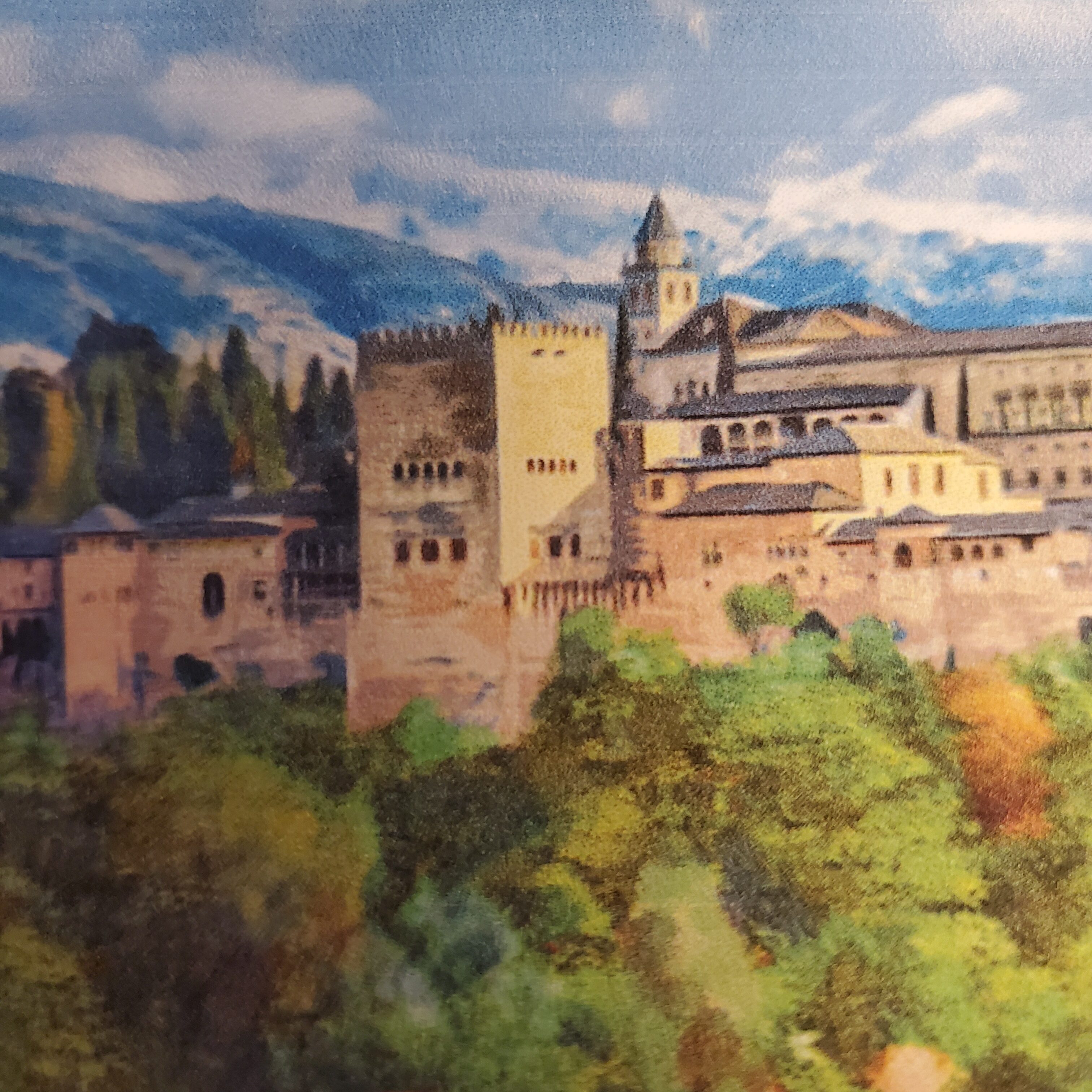
Château is a brand new roll and write game coming to Kickstarter on February 7, 2023. You can follow the campaign here on Kickstarter.
Château is a quick to learn family game where you take on the role as an architect constructing the blueprint of a stunning château in Europe. Players select a Château and try to be the first to completely fill in all the squares on their boards by utilizing polyomino shapes.
One thing that is important to know, Château is a print and play game. This means that a physical copy is not provided, only the digital file and you are responsible for printing. This is quite important since not everyone has easy access to a color printer.
Recommended Components:
- Two six sided dice
- One pencil per player
- printed Château Board per player
A career as an elementary teacher has prepared me well for a print and play game. I could not resist “teacher-ing” up my copy the game. While the intent is for players to print and mark their Château with pen or pencil, I raided my classroom and used dry erase pockets paired with dry erase markers. This allowed me to reuse the printed boards.
My next step is going to be to laminate the sheets with my personal laminator with heavier thickness laminate to make the boards more durable and again eliminates the need for reprinting.

Optional Components/Tools
- Dry Erase Pockets (find them here on Amazon)
- white board/ dry erase markers
- Laminator and laminate sheets
- Cardstock
Gameplay Overview
- 1-99 players (you are only limited by the copies printed)
- Ages 7+
- 15 min playtime
Before the first roll of the dice, each player marks five adjacent squares on the player board to their left. Players roll two dice and simultaneously mark their boards to resolve. Each number on the die represents a certain outcome, which the board depicts. The two dice give you two outcomes per roll. Overall the number rolled for 2-5 is the number of adjacent squares you mark. There are some exceptions based on special abilities which vary by Château. (This is explained further below)

- 1 – Catapult, This is the one roll that results in interacting with another player’s boards. When a one is rolled, it is resolved first, and the players all mark on square on the board of the player to their left. A space containing a hammer may not be marked.
- 2- A two square polyomino
- 3 – A three square polyomino
- 4 or 5 – for most boards you have four and five polyomino shapes respectively and must choose one to use and mark it off, and may not use it again.
- 6- Item, Items are scattered throughout each Château. When a six is rolled each player selects one items and marks all of the squares off containing that item.
Hammers
The Château all have hammers, and marking a space with a hammer allows you to mark an additional space. When players mark a hammer they may mark any other square, including another hammer. Thus gaining the ability to mark another additional square. Other players may not mark hammers in the initial five polyomino shape marked nor when a Catapult is played.
Individual Bonuses
Each Château has a unique bonus listed in the upper right hand corner of the board. Players announce their bonuses at the beginning of the game, before the first dice roll.

Base Game and Expansions
In the preview file I received it contains the base game and two expansions. There are five château in the base game The United Kingdom expansion includes three châteaus. The Scandinavian Expansion includes three expansions.
Family Game Assessment
Château grabbed our family and friends right away. We played with mixed ages and still learned the game in just a few minutes, and by the third roll of the dice, the game flowed quickly and easily. Out of pure chance, we had quite a few ones roll. There was laughter and just a little frustration when we once again passed our boards to the right. Inevitably, our plans were thwarted as the opponent marks a square of their choice. The tension certainly built up as we looked around and some people had more complete boards, and we could see them closing in on the win, with the rest of us just a few squares behind. The game was such a hit after the first play that we immediately wiped of the boards, picked new Château and played again.

Having actual architecture featured creates a link to geography and history which adds a layer beyond the game. The artwork is beautiful and accentuates each location. With the expansions, the available Châteaus cover a wider geographic range, offering more history to explore outside .
The number of Château is fixed, however, by printing additional copies, the player count in nearly infinite, since players will make unique choices with the placement of polyominoes. The format of all players using the same two dice to make their choices on squares they mark, allows a significant flexibility in player count.
Final Thoughts
Château is a great game for families. The cost is quite reasonable and affordable, and even if you use more premium materials, such as card stock, and lamination. The cost per board for a family size set is low. The rules are so simple, the game takes just minutes to set up and learn, making it accessible and fun for a huge range of players both in age and experience. This is one to watch for the Kickstarter launch and back on day one!
